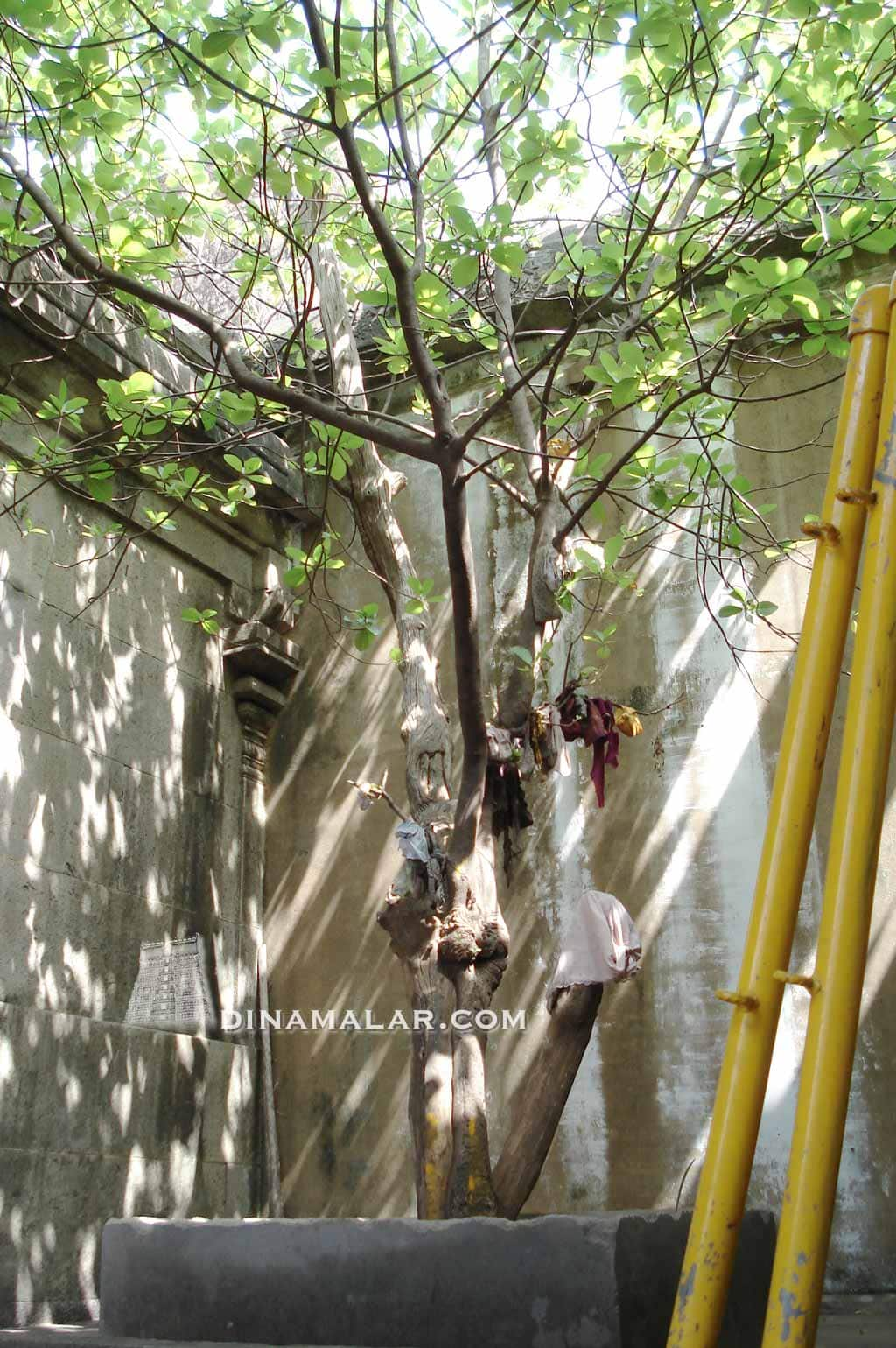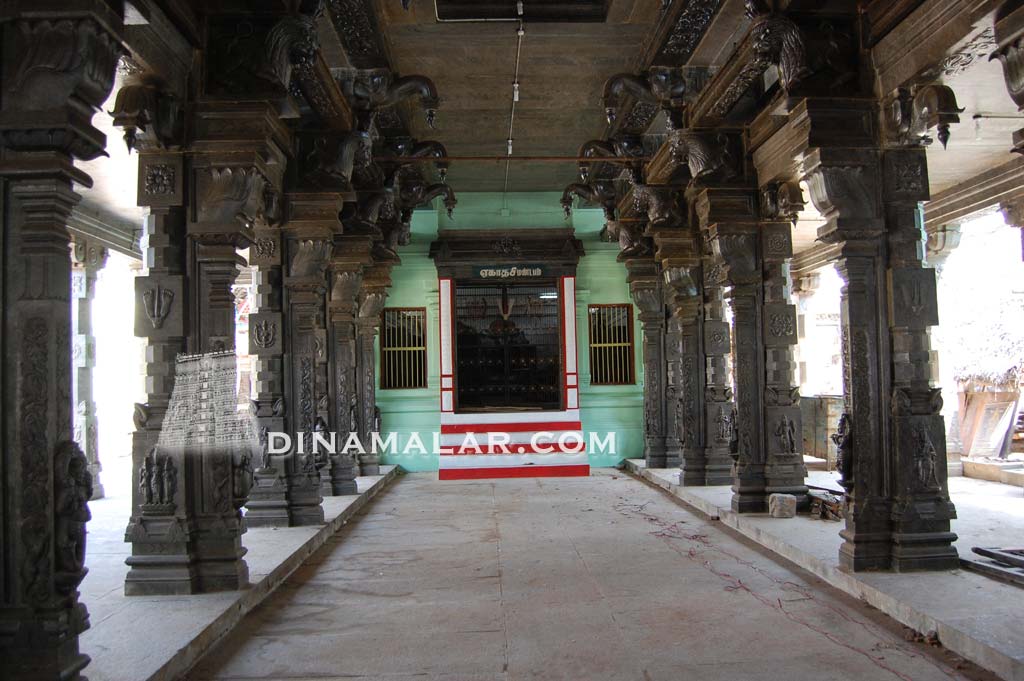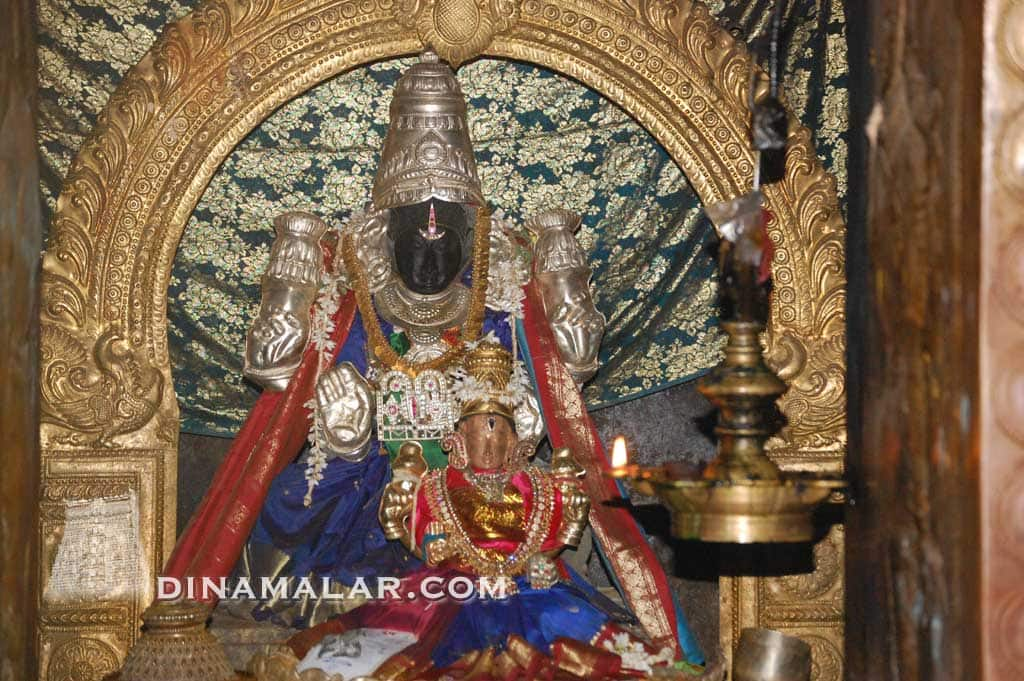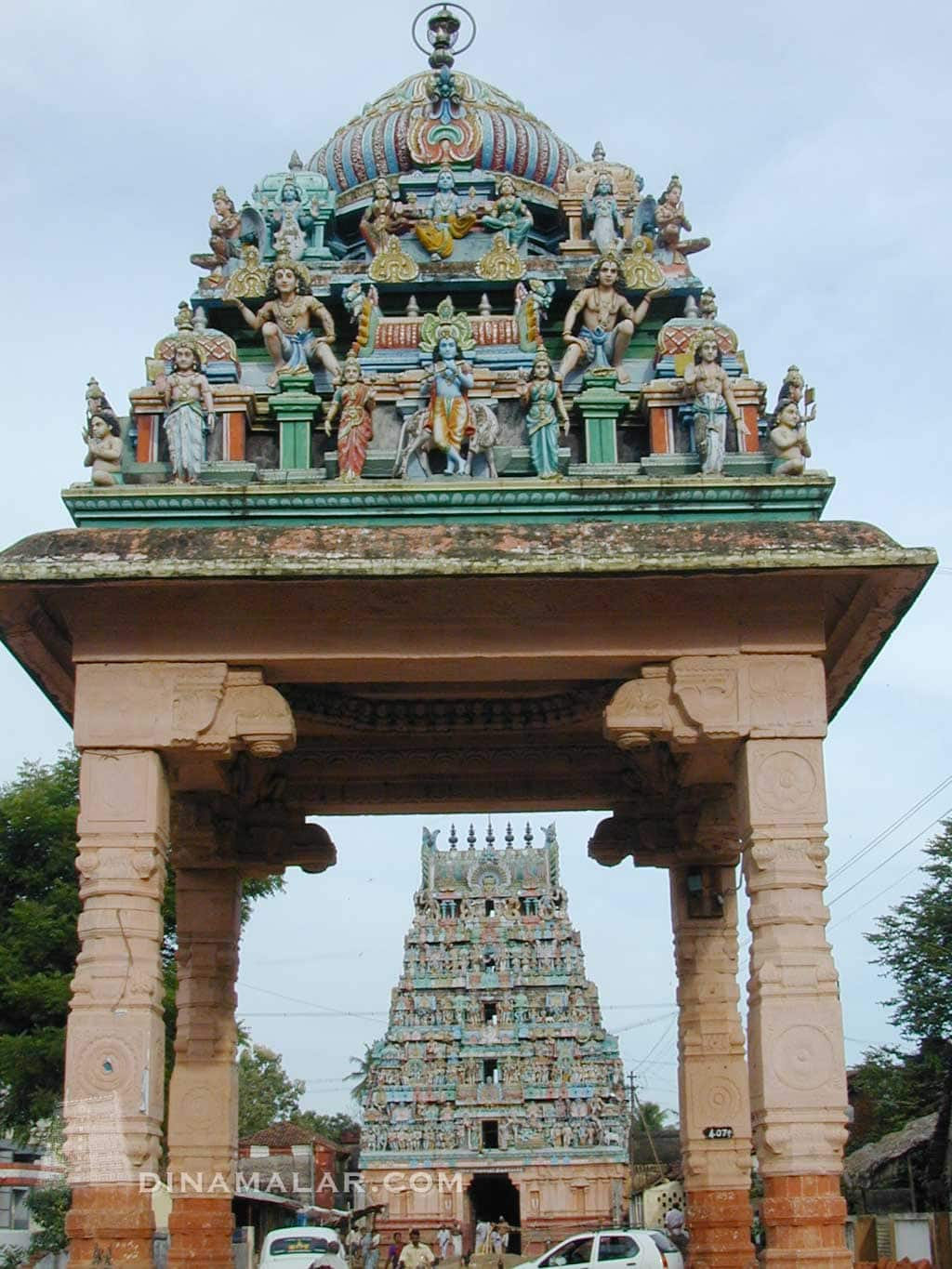GITA 9.5
 |
| STHALA VRUKSHAM |
We are at the Sthala vruksham [temple tree] of panneer tree (பன்னீர் மரம்), in Thiru Indhalur. In every Kshetram, the place, tree, pushkarini and vimanam are important. In this temple, the Ekadasi mandapam is famous for its sculpted pillars.
 |
| EKADASI MANDAPAM |
Dasavatharam and Sri Krishna's child life pranks are well sculpted. Thirumangai Alwar has praised this temple in his Peria Thirumozhi [4.9]. In his sannidhi we can see the Alwar with folded hands and spear, worshiping the Lord Sri Parimala Ranganatha.
 |
| TIRUMANGAI ALWAR |
Once the Alwar came all the way to worship the Lord; but it was noon and so the temple doors were closed and the Alwar was frustrated. After all, he was a great Bhakta and with eagerness, he came to have darshan of the Lord and so was frustrated and this frustration was exhibited in the ten pasurams dedicated for the Lord here. False anger (ஊடல் oodal in Tamil) is seen among male-female lovers. But here, Alwar , as a male exhibits his anger and disappointment. In the first pasuram, nummai thozhudhom [நும்மைத் தொழுதோம்....], Alwar demands what is lost to the Lord, if He gave darshan? He says that others would laugh at him for worshiping the Lord, if He were not to show Himself now! As told earlier, this is the outcome of Bhakti in its extreme stage. The Lord wanted to further test the Alwar and so, He told from inside that after all He is always present in Alwar's mind and so he should not complain. Alwar is enraged and says that he was not like others to be satisfied with such talks and he wanted to have a feast for his eyes by viewing the Lord in His form in this temple; and if the Lord was not willing to show Himself, well let the Lord 'live' in the temple and he would go [ வாசி வல்லீர் இந்தளூரீரே! வாழ்ந்தே போம் நீரே!!]. We can imagine the disappointment and irritation of the Alwar. All the ten pasurams are a treat to read and enjoy. As the Alwar tried to go back, the Lord got the doors opened and gave the Alwar, treat for his eyes and mind.
Now we will see the Fourth sloka of Chapter 9:
maya tatam idam sarvam
jagad avyakta-murtina
mat-sthani sarva-bhutani
na caham tesv avasthitah
jagad avyakta-murtina
mat-sthani sarva-bhutani
na caham tesv avasthitah
"By Me, in My unmanifested form, this entire universe is pervaded. All beings are in Me, but I am not in them."
Means and destination should be excellent. Idam = this [what we see and perceive], sarvam = entire, jagad =Universe, maya =by Me [Sri Krishna], tatam = is well pervaded. That is the Lord is in every conceivable matter, without exception, and is ruling. This is called Vyapakatvam or everywhere present. Avyakta murtina = [the Lord's form is] imperceptible image. We see so many objects but not the Lord present in them. Vyapakatvam is for ruling and supporting, those objects. Mat sthani = Keeping Me [Sri Krishna] as the dwelling place, sarva dbhutani = all living beings [without exception]. Earlier He said He was present in all and now He says all are present in Him. Tesu = in those living beings, aham = I [Sri Krishna] am, na avastita = not there. It may look contradictory that just after telling that He was present in all [maya tatam], immediately He says He is not in them [na avastita]. Here, we have to carefully note the difference. He said that by being inside all, He is controlling and supporting. On the same logic, we should not conclude that all living beings are inside and so they control and support Him. He supports and rules, whether they are in Him or He is in them. So to note this difference only, the last line tells that He is not controlled nor ruled by these living beings, just because they are in Him. A bhakta understands this clearly. We will now take leave of this Kshetram.
(continued)









